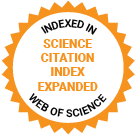Journal of Medical Internet Research
The leading peer-reviewed journal for digital medicine and health and health care in the internet age.
Editor-in-Chief:
Gunther Eysenbach, MD, MPH, FACMI, Founding Editor and Publisher; Adjunct Professor, School of Health Information Science, University of Victoria, Canada
Impact Factor 5.8 CiteScore 11.7
Recent Articles

Infertility is defined as the inability to achieve a live birth after one year of regular sexual intercourse, affecting 1 in 6 couples in France. The use of ART for infertility issues has been steadily increasing in recent years, with in vitro fertilization being the most common type of ART. Infertility is frequently regarded as a significant life crisis for many individuals, potentially leading to depression, anxiety, social isolation, and sexual dysfunction. Couples experiencing infertility demonstrate a high prevalence of negative emotional responses and decreased life satisfaction as a result of infertility and its treatments. Social media have become key tools for finding and disseminating medical information.


Previous studies have revealed that deviant peer affiliation (DPA) and Internet gaming disorder (IGD) are highly related and often co-occur. Nevertheless, the dynamic interactions among these symptoms, their bidirectional effects, and the underlying mechanisms contributing to their persistence remain poorly understood. Most existing research relies on cross-sectional designs or examines aggregated scores, limiting the ability to detect time-dependent symptom interactions. In particular, prior studies overlook the complex bidirectional relationships between specific IGD and DPA symptoms over time. As adolescence is a developmental period marked by rapid changes in peer relationships and behavioral regulation, distinguishing temporal associations between specific DPA and IGD symptoms at both the within- and between-person levels is important for clarifying mechanisms of their co-occurrence and informing personalized intervention strategies.

Coronary computed tomography angiography (CCTA) has emerged as the first-line noninvasive imaging test for patients at high risk of coronary artery disease (CAD). When combined with machine learning (ML), it provides more valid evidence in diagnosing major adverse cardiovascular events (MACEs). Radiomics provides informative multidimensional features that can help identify high-risk populations and can improve the diagnostic performance of CCTA. However, its role in predicting MACEs remains highly debated.

Although much progress has been made in AI, several challenges remain substantial obstacles to the development and translation of AI systems into clinical practice. Even the LLMs (Large Language Models) which show excellent performance on various tasks, have progressed slowly in clinical practice task. Providing precise and "explainable" treatment plans with personalized details remains a big challenge for AI systems due to both the highly professional medical knowledge and the patient’s complicated condition.

Clinical trials in neurological and psychiatric indications are hampered by poor measurement fidelity in currently used “standardized” rating scales. Digital, repeatable tests that can be remotely administered offer a more fine-grained understanding of the patient’s clinical trajectory. Several such tools are being developed, but only a few have been validated in terms of their ability to discern and describe change over time—a critical element of clinical trials.

Successful implementation of any digital intervention in a health care setting requires adoption by all stakeholders. Appropriate consideration of behavioral change is a key driver that is often overlooked during implementation. The nonadoption, abandonment, scale-up, spread, and systems (NASSS) behavioral framework offers a broad evaluation of success for digital health solutions, and the theoretical domains framework (TDF) focuses particularly on adopters, identifying determinants of behavior and potential reasons for implementation issues.

Abstract: Recent advancements in cognitive neuroscience and digital technology have significantly accelerated the adoption of digital therapeutics for cognitive impairment. This viewpoint explores the innovative applications of digital therapeutics in the assessment, intervention, management and monitoring of cognitive disorders, while highlighting key challenges that impede their widespread integration into clinical practice. Drawing on the definition of cognitive digital therapeutics and the multi-stakeholder collaboration required for its development and implementation, this paper examines the role of digital technologies in cognitive health and explores challenges from multiple perspectives, including clinical practice, policy framework, user adoption, ethics and privacy, and data interoperability and system integration. Additionally, this viewpoint offers strategic recommendations to address the challenges and future prospects of cognitive digital therapeutics, emphasizing the importance of multi-stakeholder collaboration, prioritizing user-centered design, and leveraging emerging technologies such as artificial intelligence (AI) to enhance the scalability, sustainability, and future integration of cognitive digital therapeutics.

Medical culture refers to institutional attitudes toward technology usage, innovation, teamwork, and evidence-based practices. Hospitals with strong innovation cultures promote mobile app use, while traditional settings may resist change, relying on conventional methods. Medical culture significantly influences the usage of technology in health care, including mobile health (mHealth) applications, which have the potential to enhance patient care in physical therapy settings. Understanding the role of medical culture and other factors such as app usability and workplace setting in shaping the usage and perceived effectiveness of mobile apps is essential for promoting their integration into clinical practice.
Preprints Open for Peer-Review
Open Peer Review Period:
-
Open Peer Review Period:
-
Open Peer Review Period:
-
Open Peer Review Period:
-



















